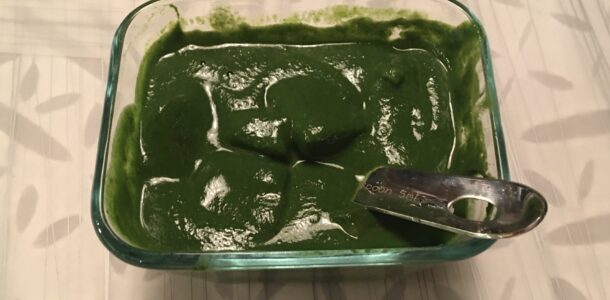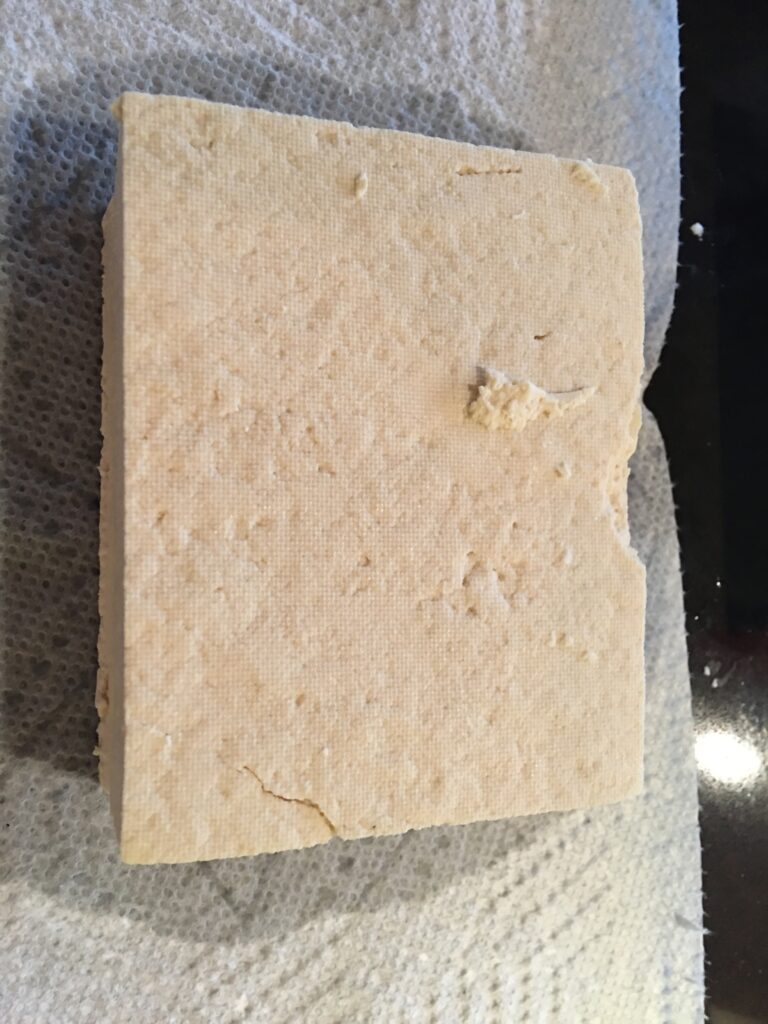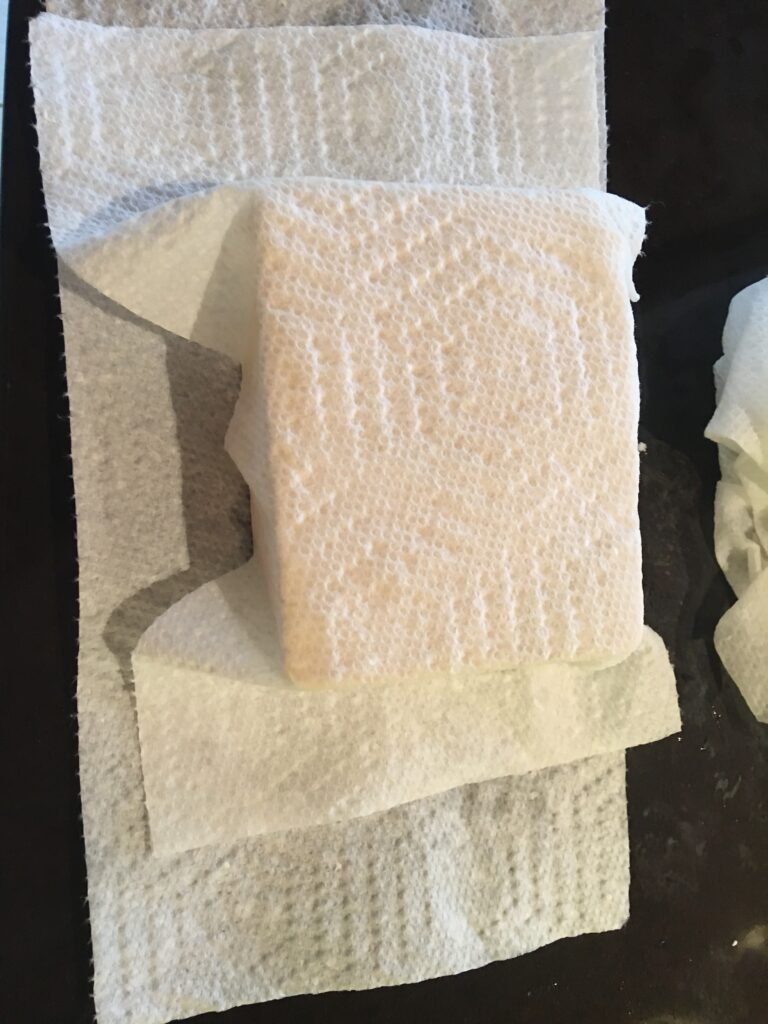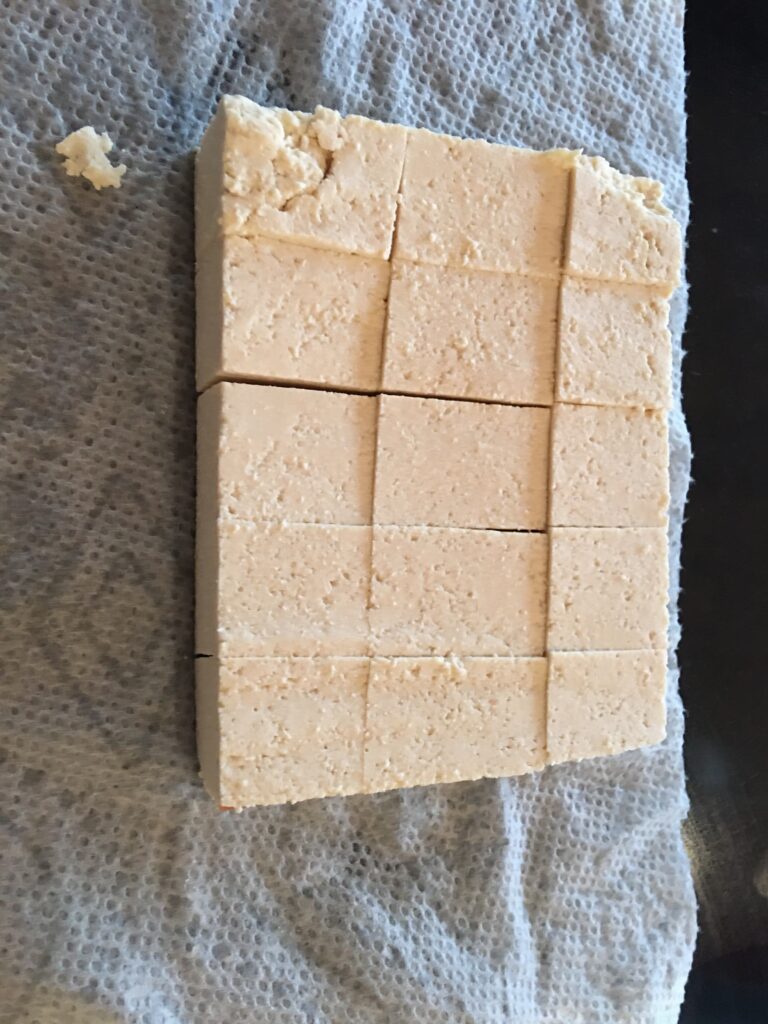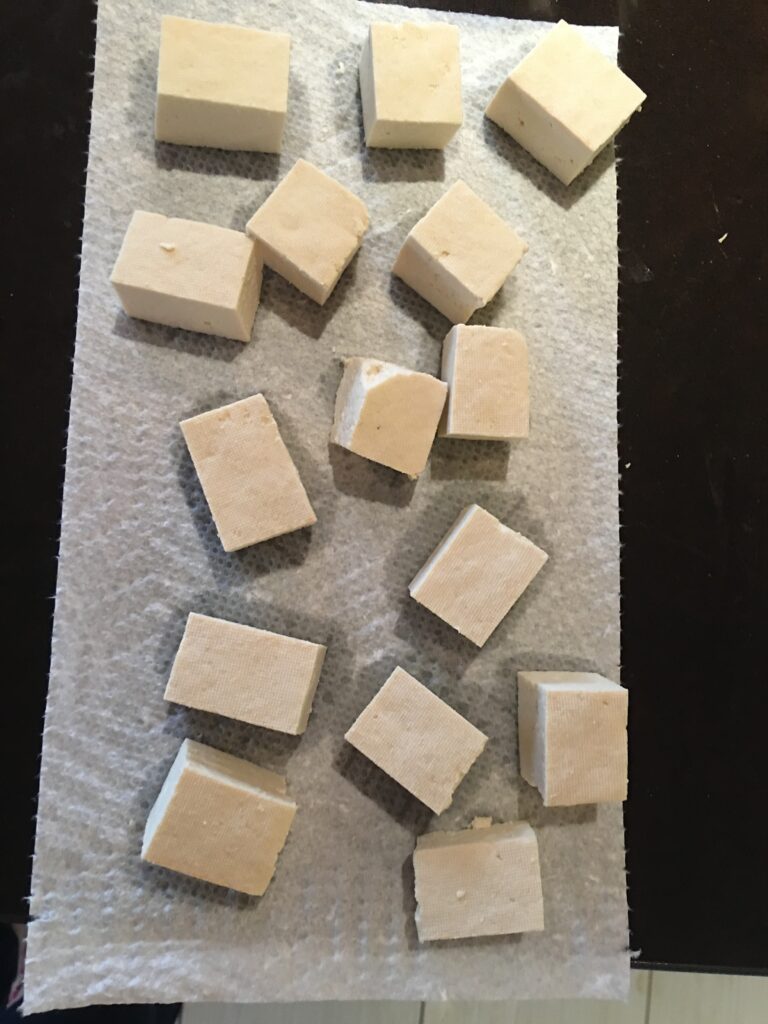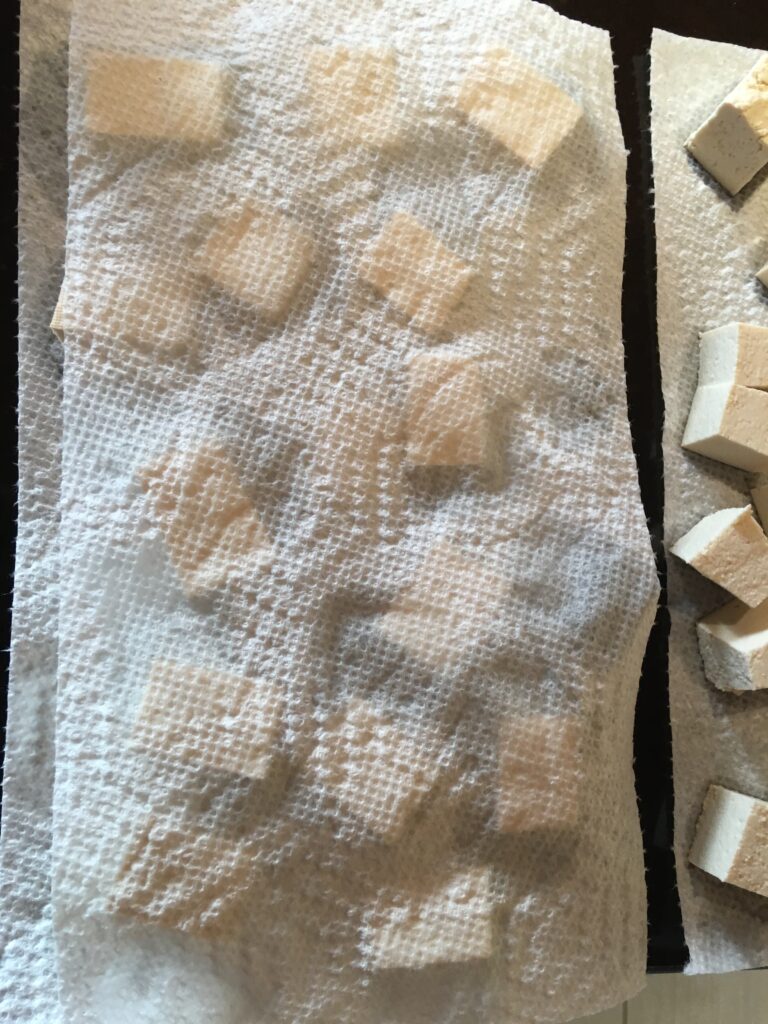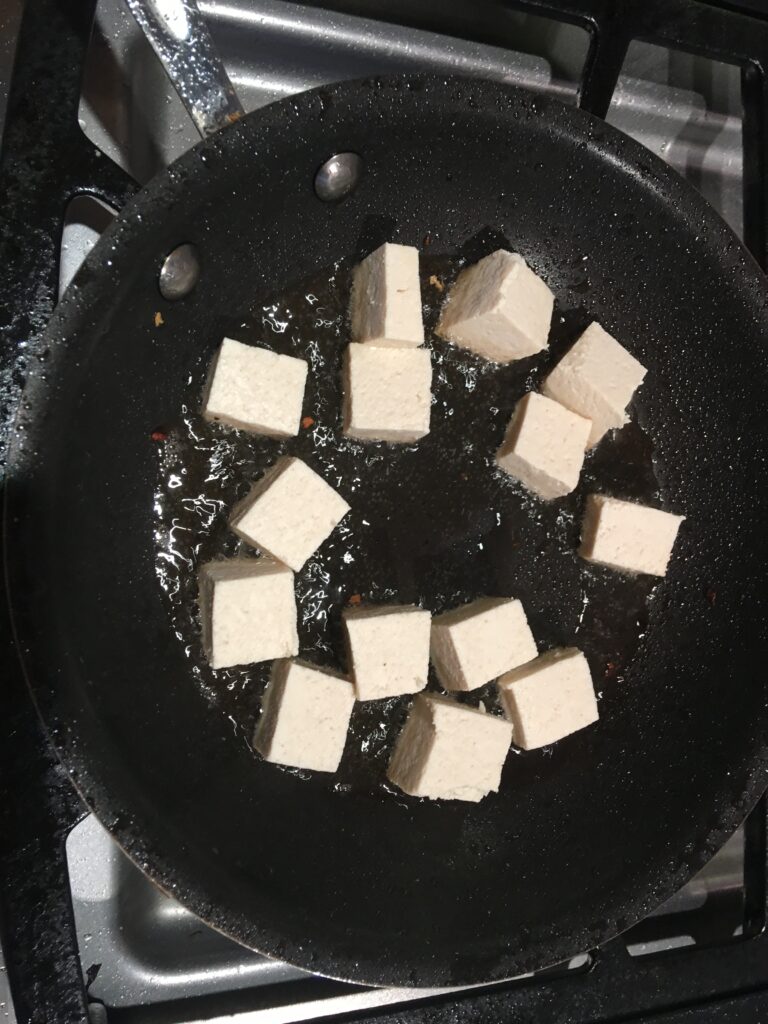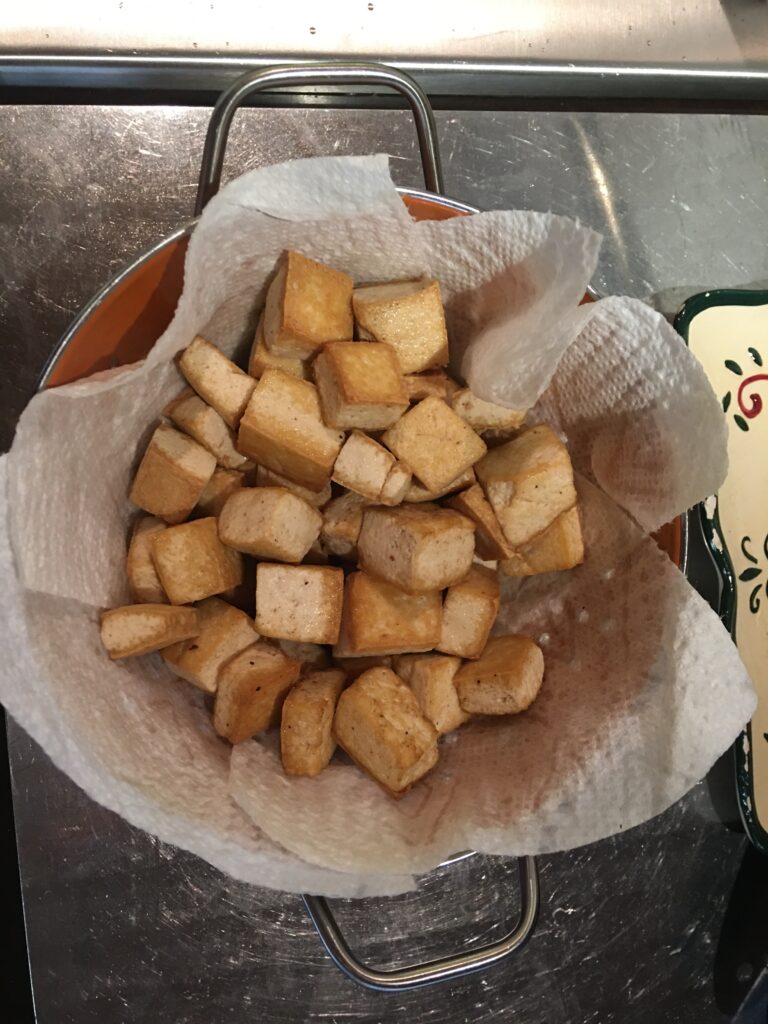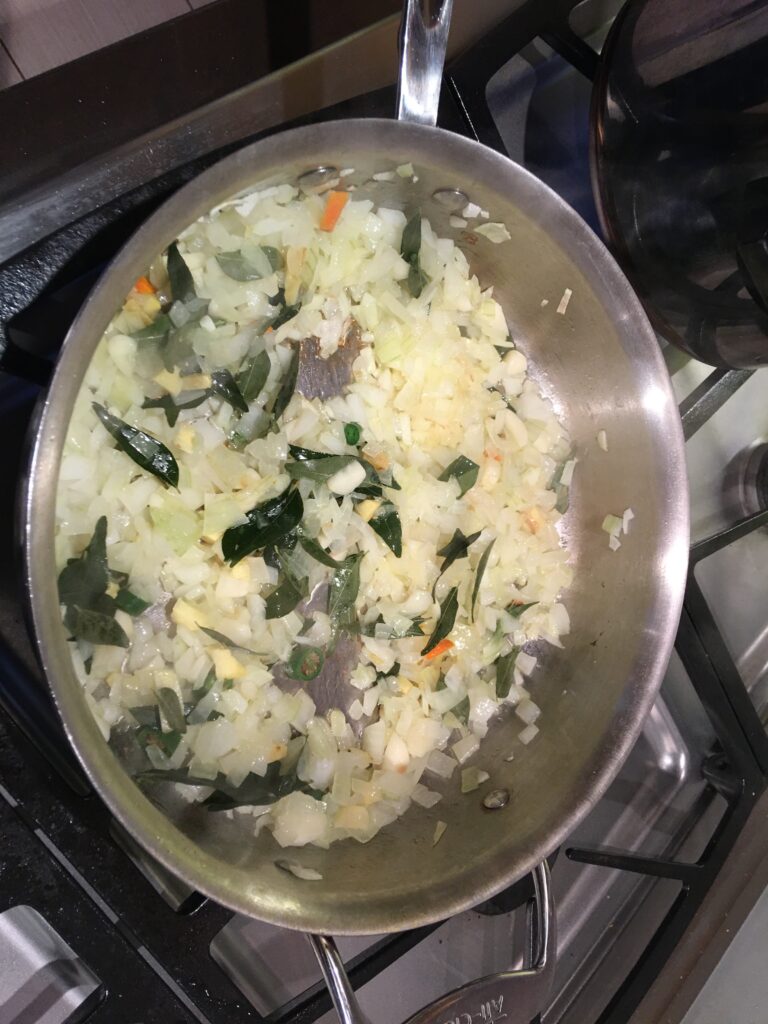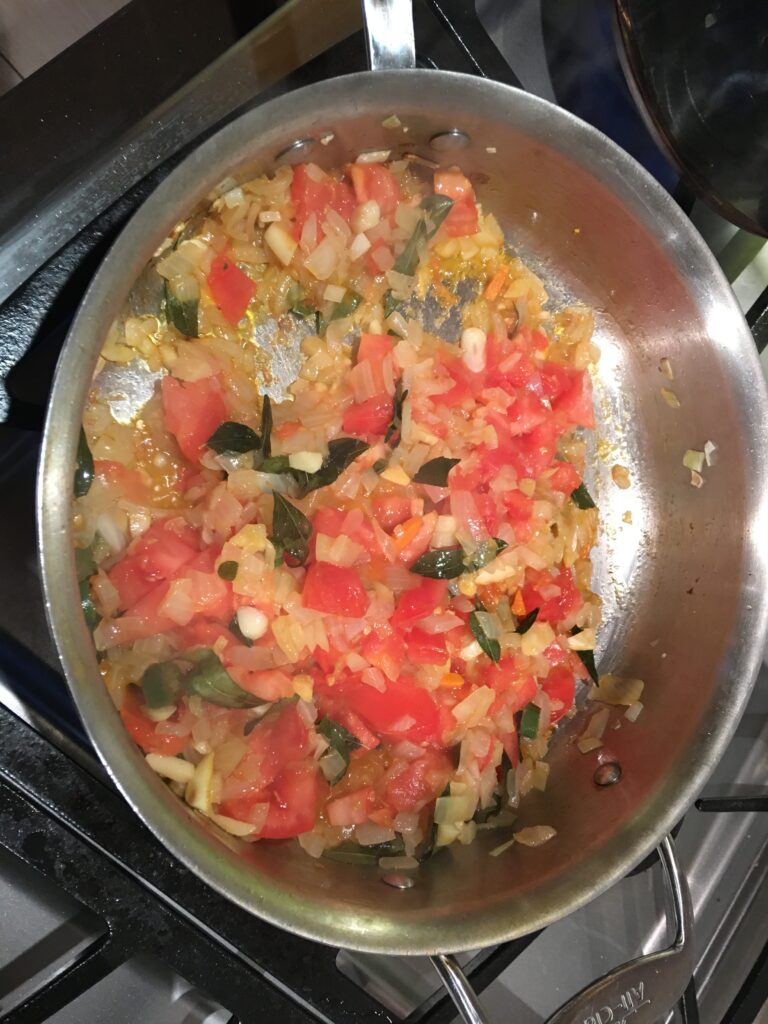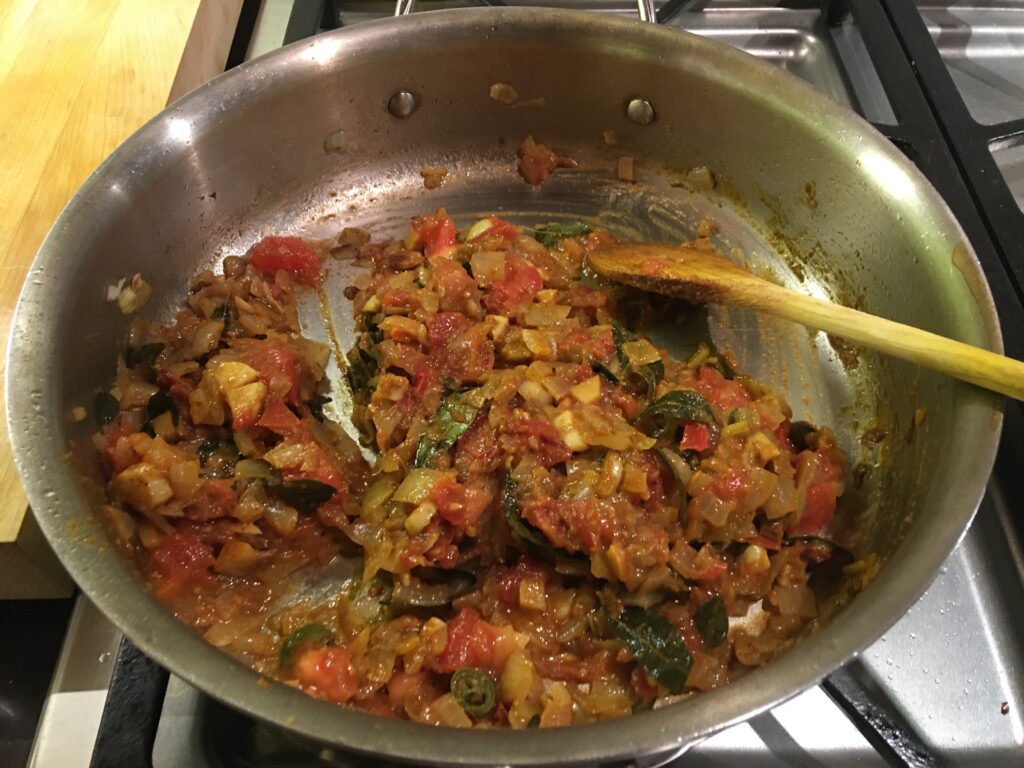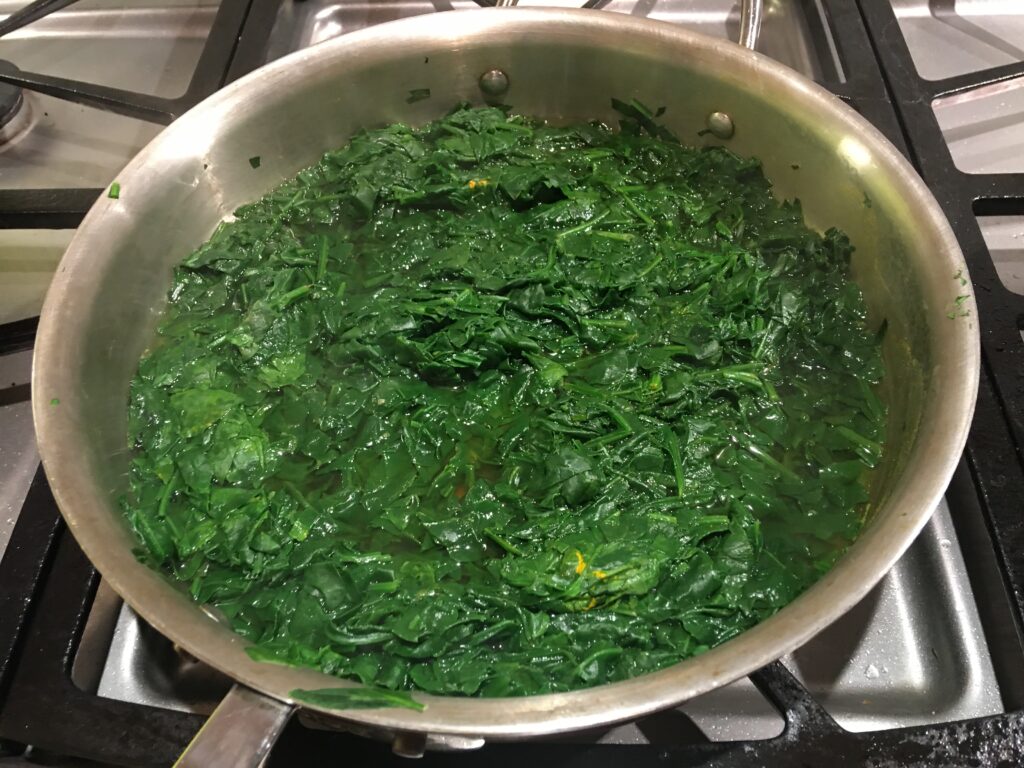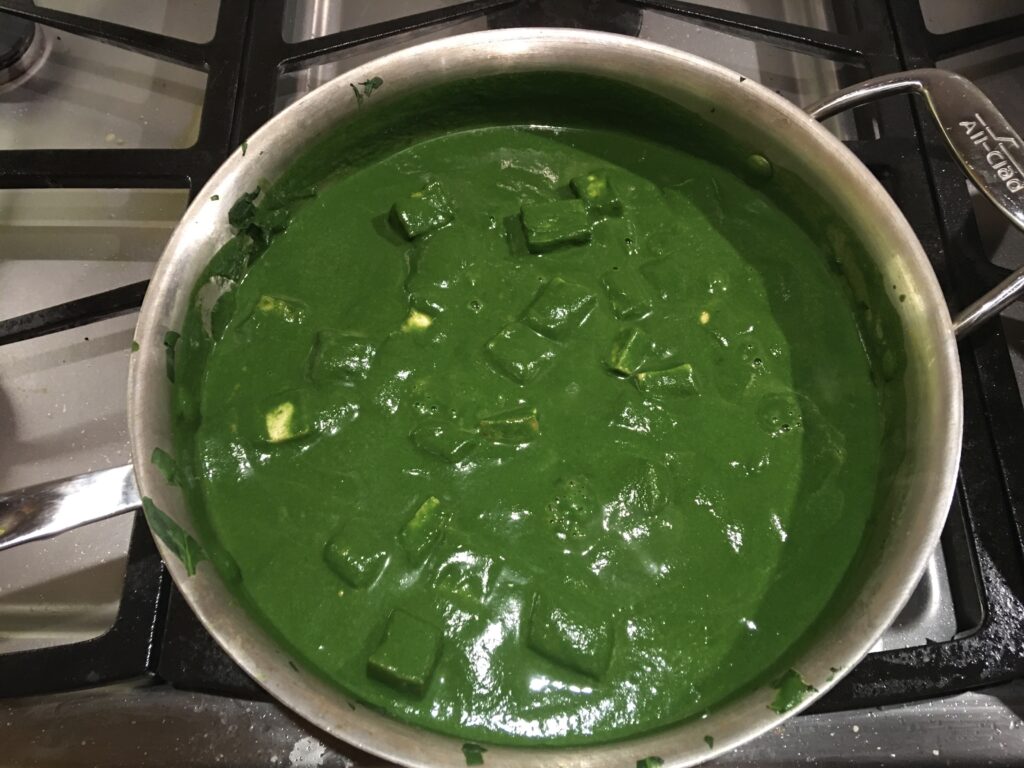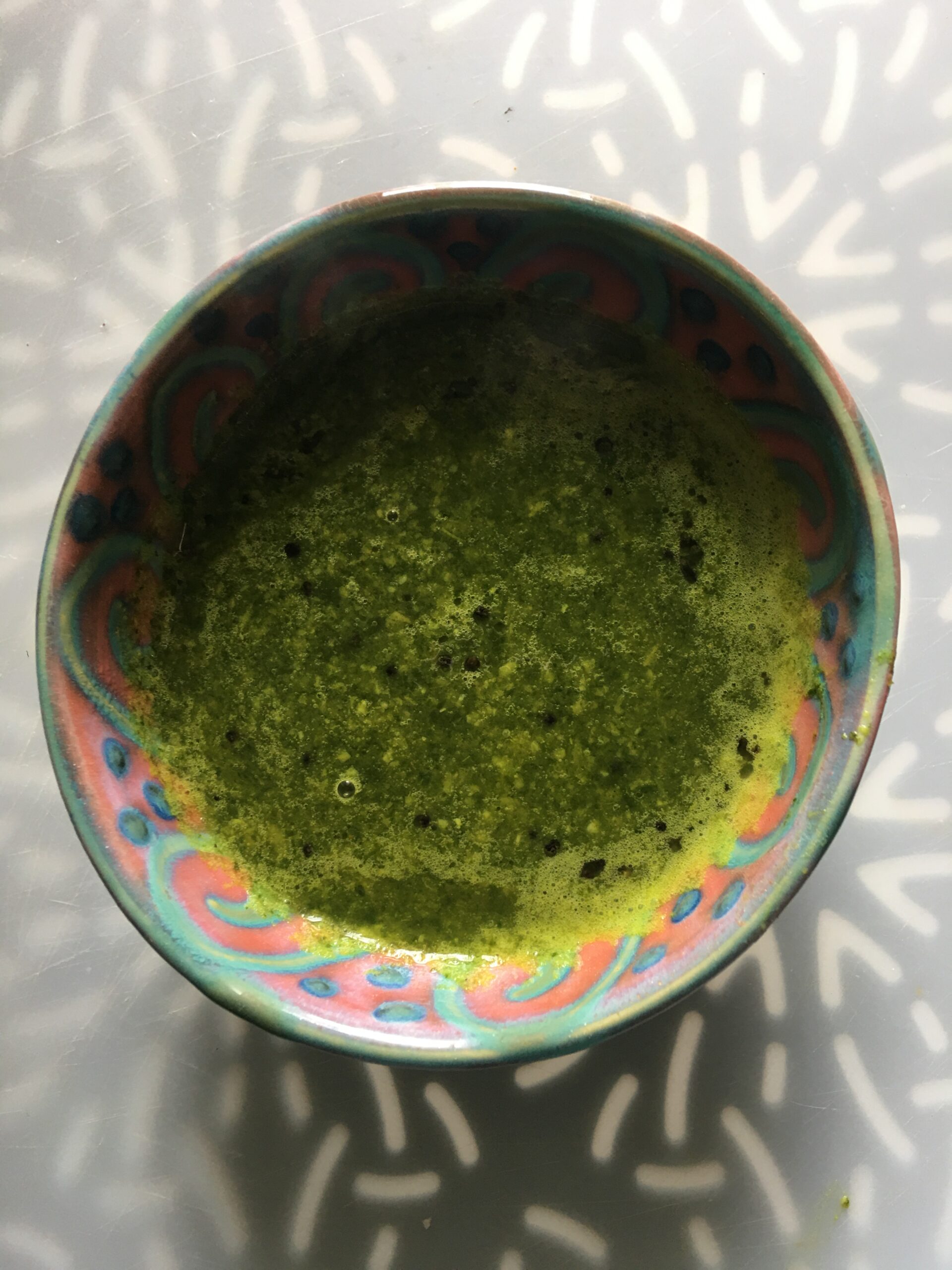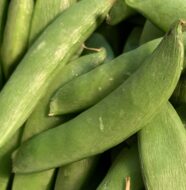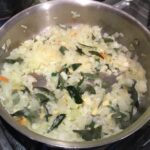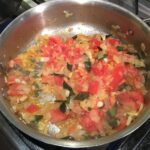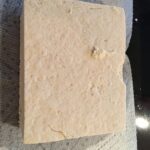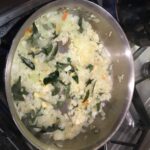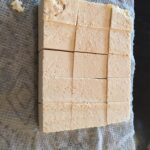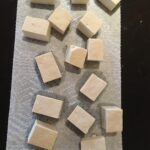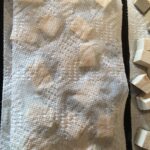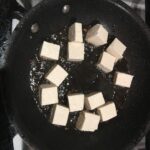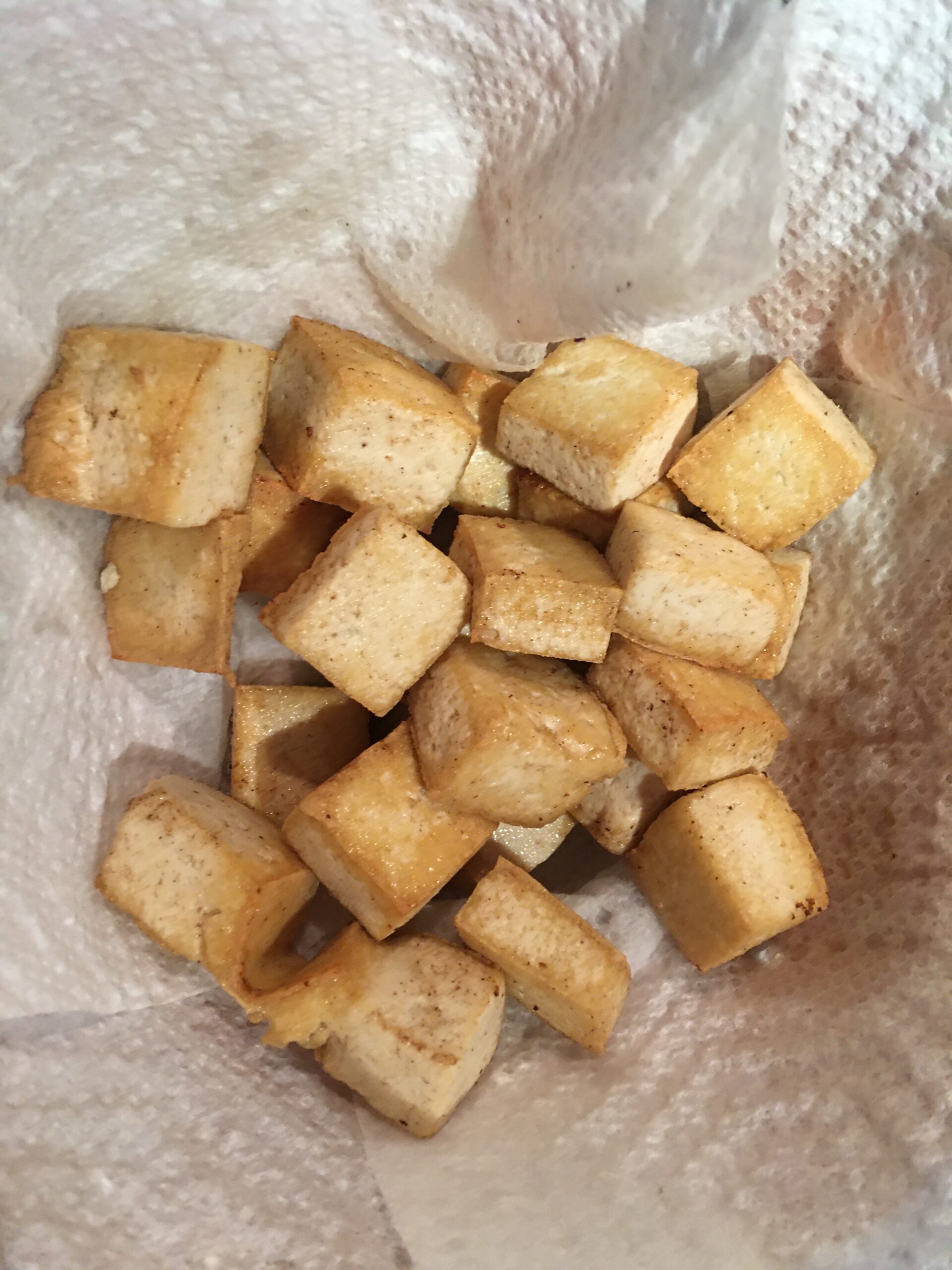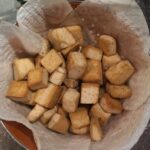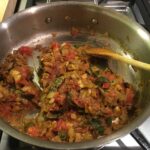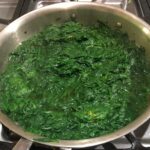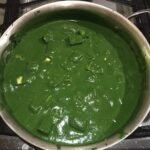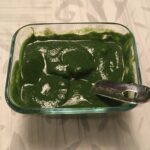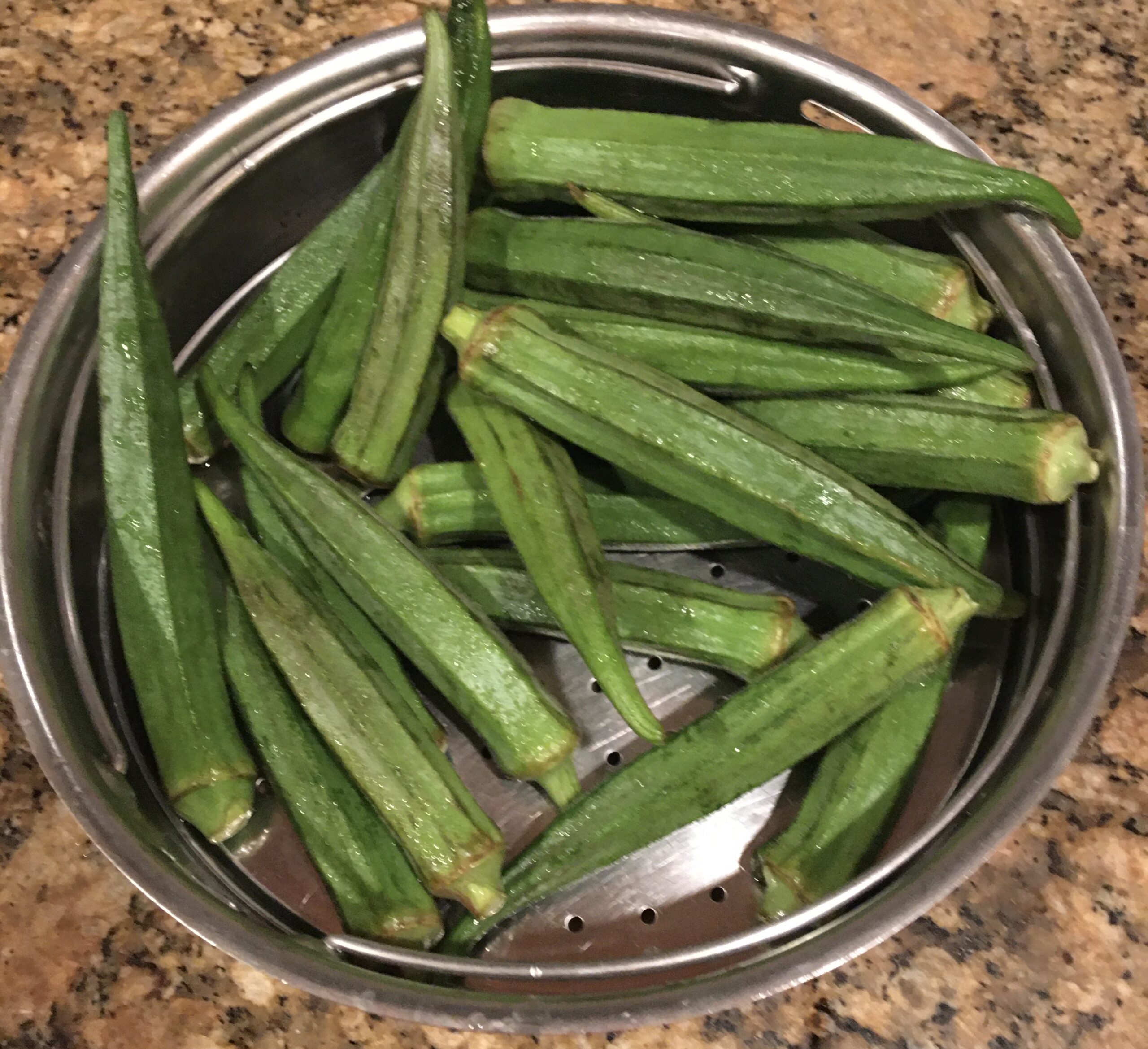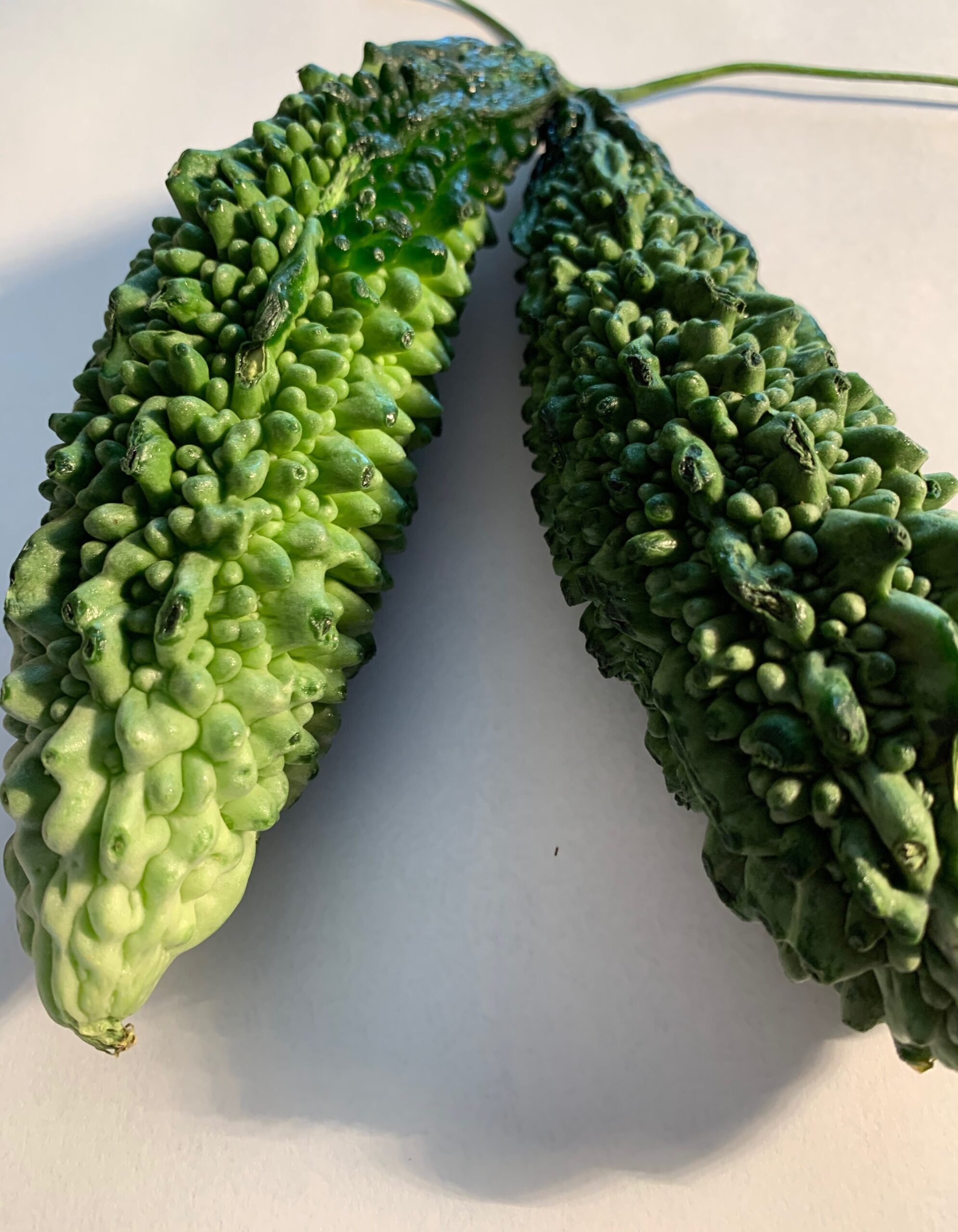Spinach (scientific name (Spinacea Oleracea) is considered a superfood and a weight loss facilitator being highly nutritious (Calcium and Iron) and low in calories. It is the most popular leaf consumed raw as a salad, baked in Lasagna or Quiche with cheese or mushroom, boiled in soups, added to dips with sour cream or artichoke as well as blended in smoothies.
Growing Spinach: being a fast-growing plant it yields many leaves in a short time. It prefers full sun but will produce a respectable harvest in partial shade. Plant spinach in the cool weather of Spring and Fall. Mix in aged compost or other rich organic matter in the soil before planting. Space Spinach plants 12″ apart in fertile well-drained soil with a pH of 6.5 -7. Check soil moisture often or consider using a soaker hose to keep moisture levels consistent.
https://bonnieplants.com/how-to-grow/growing-spinach/
Buying & Storage: Two varieties are cultivated for their edible leaves. Savoy type with dark green crinkle (wrinkled) leaves and flat-leaf variety with smooth-surfaced leaves. Best available during the winter season. In the market buy fresh leaves featuring dark green color, vitality, and crispiness. Avoid those with dull sunken leaves, yellow discoloration, and spots. Wash them thoroughly under clean water and rinse in saltwater to remove any insecticide residue.
Ways to keep spinach Fresh:
i. To maintain freshness wrap the spinach in paper towels, place it in a bag, and store it in the crisper draw of the refrigerator for up to 10 days.
ii. Store in a plastic bag in original packing if using within 3-7 days.
iii. Store as cold as possible without freezing. Keep the fridge at 39F to prevent loss of Folate and Carotenoid content. Keeping at 50 degrees or higher will accelerate nutrient loss.
https://www.wikihow.com/Keep-Spinach-Fresh
History: The name spinach is derived from Persian “Aspanakh” meaning green hand. Spinach had its origins in the Middle East and was introduced to the U.S.A. by the Spanish. An Arab agronomist in 12th century called spinach as ” the chieftain of leafy greens “. It gained quick popularity in England and France (probably introduced via Spain during Lent) as it grew quickly in Spring for easy consumption when other foods were restricted. During the world war, I, wine fortified with spinach juice was given to French soldiers weakened by hemorrhage. In the first known English cookbook ” Forme of Cury – 1390 AD ” spinach is referred to as “Spinnedge / Spynoches”. The smooth seeded form of spinach was described in 1552. It was a favorite vegetable of Catherine de Medici. Dishes served on a bed of spinach were known as “Florentine” reflecting Catherine’s birth in Florence.
Spinach Recipes
Spinach and cottage cheese (Palak Paneer)
Spinach Lentil Soup (Keerai Molagootal/ Dal Palak)
Spinach Puree ( Keerai Masiyal)
Spinach n Peanuts Sauté (Palak Mungfali)
Paneer is cottage cheese made from curdled milk. It is a meat substitute providing proteins needed by the body. 100 g of paneer provides cal 265 with protein 11 g, fat 20.8 g, carb 1.2 g, calcium 208 mg but no iron. Tofu is a healthier substitute when compared to paneer. It provides cal 62, protein 9 g, fat 2.7 g, calcium 130 mg, and rich in iron. Paneer can be eaten raw with a sprinkle of salt and pepper, sautéed as in paneer burji, or cooked with vegetables like spinach or peas. Some popular paneer recipes are ” paneer palak, paneer matar, paneer, and peas burger.” When paneer is cooked with spinach it becomes a nutritious dish to provide the iron needed.
Spinach Nutrition Facts (Spinacea Oleracia)
| GI =15; GL 1 | Minerals | Vitamins |
| Energy 23kcal – 1% | Sodium 79mg – 5% | Folates 19 mug – 48.5% |
| Carb 3.63g – 6% | Potassium 588mg – 12% | Niacin 0.724mg – 4.5% |
| Protein 2.86g – % | Calcium 99mg – 10% | Pantothenic acid 0.065mg – 1% |
| Total Fat 0.39g – 1.5% | Copper 0.130mg – 14% | Pyridoxine 0.195 mg – 15% |
| Cholesterol 0mg – 0% | Iron 2.71mg -34% | Thiamin 0.078mg – 6.5% |
| Dietary Fiber 2.2g – 6% | Magnesium 79 mg – 20% | Vitamin A 9377 IU -312% |
| Beta Carotene 5626mug | Manganese 0.897 mg – 39% | Vitamin C 28.1 mg – 47% |
| Crypto Xanthin Beta 0 mug | Zinc 0.53mg – 5% | Vitamin E 2.03mg – 13.5% |
| Lutein zea xanthin 12198 mug | Vitamin K 482.9 mug – 402% |
Spinach Health Benefits
- Anemia: Spinach being high in iron content 2.7 mg / 100 g prevents anemia.
- Antioxidants: Spinach contains polyphenol antioxidants Lutein, Beta carotene, and Zea-xanthin – a rich and potent combination that protects the body from oxygen-derived free radicals that affect the development of various diseases and the aging process.
- Alzheimer’s disease: Vitamin K reduces neural damage in the brain in Alzheimer’s patients and can prevent it with regular spinach consumption.
- Diabetes Management: Alpha-lipoic acid present in spinach has been shown to lower glucose levels, increase insulin activity, and prevent oxidative stress-induced changes in patients with diabetes. Studies have also shown a decrease in peripheral and autonomic neuropathy by alpha-lipoic acid injections.
- Improve and maintain Eye health: 100g provides 9376 IU of vitamin A, which is 188% of RDA; vitamin A contributes to eye health and skin maintenance. Zeaxanthin a dietary Carotenoid is partially absorbed into the eyes to prevent macular degeneration and provide eyes with protective light filtering properties. Lutein improves eye function and degeneration of the retina. It also reduces tension in the eyes by accumulating in the eye tissues.
- Fiber: 30% soluble fiber in spinach prevents the body from absorbing fat and cholesterol from food. It also regulates blood sugar and cholesterol levels and helps eliminate toxins from the body. Insoluble fiber prevents constipation and helps the functioning of the digestive system.
- Superfood: Spinach contains vitamins A, C, and K, B group vitamins, potassium, magnesium, iron, various antioxidants, fiber, omega 3 fatty acids, and protein.
- Heart disease: Spinach is a good source of healthy omega 3 fatty acids, which helps prevent heart disease, aids the body with energy production. and regulate blood pressure.
- Immune System: Vitamin C a vital antioxidant boosts the immune system, helps the body fight infections and cleanses it from oxygen-derived free radicals.
- Weight loss: has a Glycemic index GI – 15; perfect vegetable to promote weight loss. Thylakoids in Spinach extend digestion, produce the feeling of satiety and prevent cravings as per a study done by scientists from Lund University. Thylakoids reduce hedonic hunger by 95% and increase weight loss by 43% {https://www.medicaldaily.com/reasons-why-you-should-eat-spinach-thylakoids-make-you-feel-more-full-regulate-blood-glucose-271079}
- Iron: Spinach contains iron which helps regulate red blood cell production and prevents anemia and hair loss
- Kaempferol: Spinach is high in antioxidant Kaempferol which lowers the risk of developing cancer and chronic disease.
- Magnesium: Magnesium aids in protein synthesis, and regulates neural activity, blood pressure, blood sugar levels, and maintains nerve function.
- Nitrates: Spinach promotes good heart health with its high nitrate content.
- Potassium: 558 mg potassium / 100 g spinach compared to banana 358 mg 16% of RDA. Potassium helps preserve bone mineral density and retain muscle mass. It helps prevent the formation of kidney stones and control heart rate and blood pressure.
- Proteins: 2.9 g protein per 100 g of spinach that is easily broken down by enzymes into amino acids which are vital for working out in the gym.
- Vitamin K: 100 g contains 604% of RDA; vitamin K is vital for health since it strengthens bones and stimulates orthotropic activity. It also improves calcium absorption and may reduce calcium excretion in the urine.
- Nutrition 100g raw spinach provides cal 23; carb 3.6g; fiber 2.2g.100g of spinach has more iron (3.57mg) than a hamburger patty (2.49mg)
Note of Caution: people with kidney/ gall bladder/ thyroid / gout problems may be affected by the oxalates in spinach that may interfere in calcium absorption. Note of Caution: Risks associated with spinach consumption - patients on blood thinners have to be careful with foods containing Vitamin K; too much potassium can be harmful for those with partially functioning kidneys.
Paneer Health Benefits
- Good source of protein for vegetarians : paneer is good for people who train for muscle building. It neither causes blood sugar level spikes nor does it give an instant boost to drop soon and keeps one satiated for a long time.
- Builds stronger teeth: calcium in paneer builds stronger teeth and bones.
- Weight loss: paneer is a great source of conjugated linoleic acid – a fatty acid which helps to lose weight by increasing the fat burning process.
Spice Health Benefits
- Turmeric powder: curcuminoids in turmeric were found effective in reducing the number of heart attacks in bypass patients after surgery.
- Coriander powder: prevent and treat diabetes. it enhances the secretion of insulin in the pancreas aids in proper assimilation of sugar, resulting in a marked decrease in blood sugar level.
- Cumin powder: a rich source of iron. 1tsp. cumin powder contains 1.4 mg or 17.5% of RDA supports the growth of bones in children and replacing iron lost in young women during menstruation.
- Ginger Paste: aids digestion, reduces blood pressure, relieves chest, and nasal congestions.
- Garlic Paste: delays aging, cataract formation, prevents stomach cancer, and boosts libido bot ginger and garlic being aphrodisiacs.
- Green chili paste controls pain and combats cold and sinus, control mood by releasing endorphins.
Method to cook Spinach w. cottage cheese / Tofu
- To make Paneer: (This makes 10-12 one-inch cubed pieces. 15 min.)
- Heat milk in a 2-quart bowl in a microwave until it boils.
Add a pinch of salt and yogurt or lemon juice. Watch the milk break into solid cheese and water. - Strain the liquid from the cheese using a cheesecloth or coffee filter.
Press cottage cheese between cutting board with heavy weights for 10 minutes.) - Cut Paneer/ Tofu slab into cubes or diamonds prior to using in recipes.
Fry paneer lightly with 1 tbsp. oil in a nonstick pan. (optional)Tofu usage: Drain liquid from Tofu slab ; dry between paper towels; cut into cubes .
- To cook Spinach: Parallel cooking: while the paneer is draining the whey liquid
- Chop spinach & rinse; cook with salt and turmeric in the microwave.
- Peel and chop the onion finely; heat 1 tbsp.of oil in a frying pan; add onion, spice powders, curry leaves and pastes.
- Sauté until the onions turn translucent.
- Chop tomatoes and sauté until oil separates.
- Combine with cooked spinach & puree in a blender. Add to paneer cubes in a sauté pan and mix together.
- Garnish with sour cream/cashew nut paste after removing from heat.
Serve Paalak Paneer with Quinoa, Naan, Parathas, Pasta or Veggie Pilaf.
TIPS
Make ahead: Paneer cubes to save time; Store-bought paneer can be stored in the freezer
Save time : Substitute fresh tomatoes with tomato paster
Use caution: the oil may squirt out when frying paneer pieces
the oil must be quite hot to prevent paneer pieces from sticking to bottom
Substitute coriander/cumin powder with shahi paneer masala
Vegans can use Tofu pieces

